CES 2020: Pimax Has Announced New Virtual Reality Headsets for Artisan Beginners
Pimax has showcased improvements for its two well-known virtual reality models during this year’s CES 2020. These includes the company’s previous cheap “Artisan” model: Pimax Vision Artisan.
The new entry-level virtual reality headset offers users a maximum field of view of 170 degrees as well as a resolution of 1,700 by 1,440 pixels per eye (or full resolution of 3,400 x 1,440). The company did not issue any statements regarding the headsets’ built-in display. Their high refresh rate of 120Hz certainly suggest an LC display.
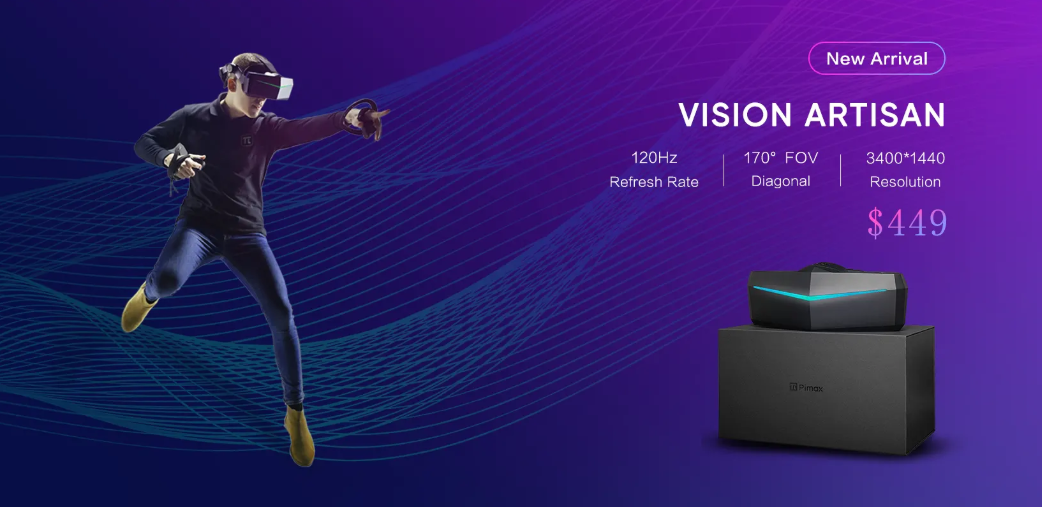
The Artisan headset will cost from $449 and supports SteamVR 1.0 as well as 2.0 tracking. If you are planning to use the Pimax Vision Artisan glasses for more than just cockpit simulation, then you have to dig deeper into your pockets and spend more: the SteamVR base station retail for about $150 and compatible controllers go for between $240 and $300.
The company has been developing high-end virtual reality headsets for four years now since it first unveiled its Pimax 4K VR headset. Its fortunes changed with a $4.2 million Kickstarter that it used to fund the development of the Pimax 8K headsets. Since then, the company’s fortunes has been soaring and it has been making waves in the industry with new product options.
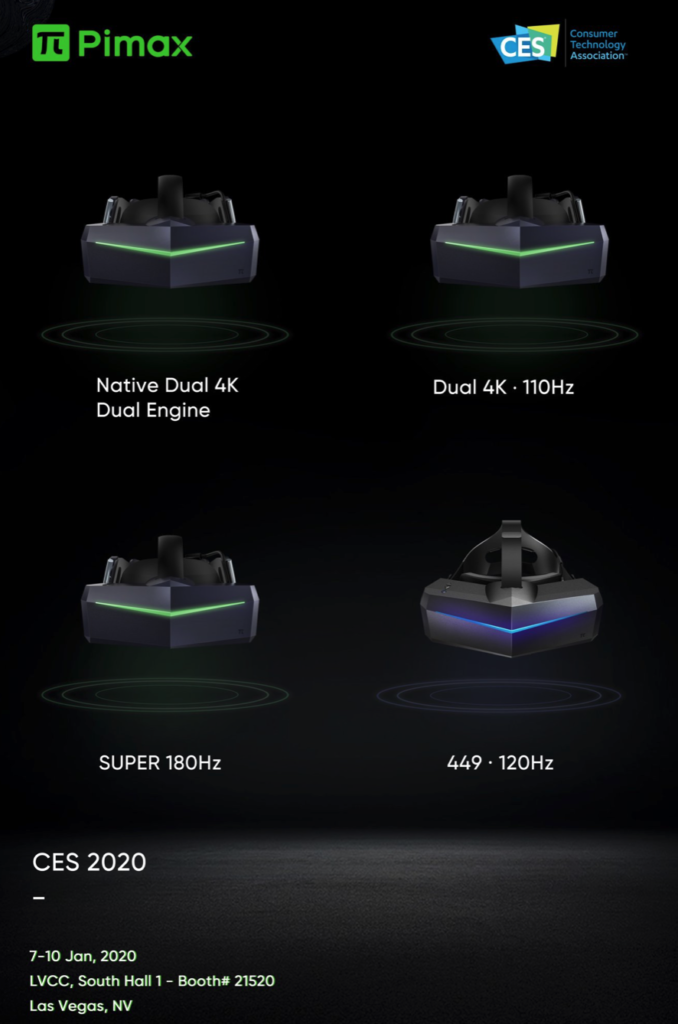
With the new headsets announced during the CES 2020, the Pimax is now shifting its attention to the consumer market after directing its efforts at the enterprise market for years. The Pimax Artisan will be its consumer headset.
On the enterprise side, Pimax also unveiled a new business virtual reality headset during the CES 2020. The new enterprise-focused virtual reality headset is known as Pimax 5K SUPER. Its superb specs are yet to be realized in VR headsets so far and it is only logical that it is built for the enterprise and business market.
Below is a look at both of these headsets, including their specs and potential use-cases. We also look at where this new hardware will potentially fit in a rapidly overcrowding virtual reality headset market.
Pimax Artisan
While it is not primarily a consumer headset, the Pimax Artisan can deliver all the functions of a typical consumer virtual reality headset. It is a versatile headset that can also give out much more and be used as a business VR headset. It will find wide uses ranging from playing games to designing in an enterprise use-case scenario.
Its display is impressive and clocks 1600 x 1400 per eye in terms of the resolution. The refresh rate is fixed at 72Hz, 90Hz and 120Hz and it has a fairly impressive field of view of 140 degrees.
Pimax has stated that the minimum PC requirements for this virtual reality headset are similar to that of an Oculus Rift S headset which means it would consistently run at 72Hz.
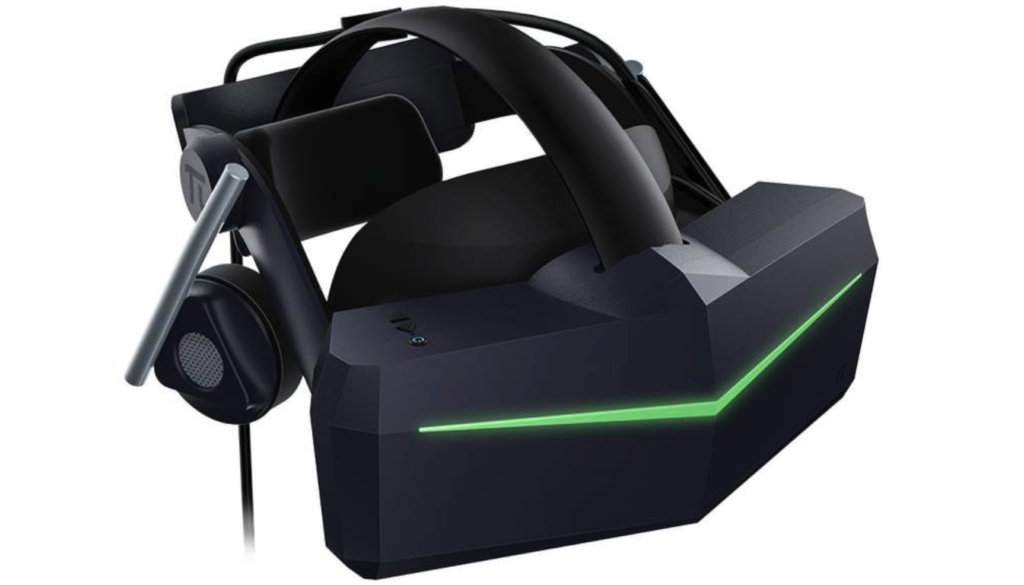
On top of the headset price, you still need to purchase controllers for the Pimax Artisan VR headset. These should be controllers with the Nolo positional tracking system and they cost about $200. They aren’t exclusively for Pimax headsets; they can be used with almost all virtual reality headsets. The positional tracking system is quite similar to the PSVR tracking and relies on a front-facing camera. You won’t get the capacities you would have with inside-out tracking or SteamVR tracking, though. If you already have these controllers, you can purchase the headset for $449. However, if you want to purchase the Pimax Artisan virtual reality headset with the Steam tracking, then you will spend more than $1,000 which is about the same price as a complete Valve Index hardware package.
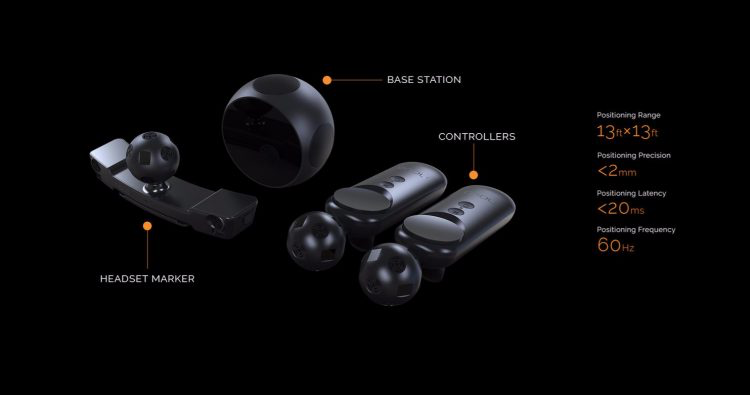
Pimax 5K SUPER
The Pimax 5K SUPER has been billed as one of the best enterprise VR headsets. It’s an improved version of Pimax’s main seller 5K Plus. It offers a similar field of view and resolution as the 5K Plus of 170-degrees and 1440p LCD panel resolution respectively.
However, it doesn’t have native foveated rendering and eye tracking but it does have the specs that will position it as one of the top-of-the-line business headsets. It has a resolution of 1440p per eye on LCD panels with a wide field of view of 170 degrees. Its whopping 180Hz refresh rate is quite the clincher. These are top-end specs that even experienced VR users will find quite impressive.
In comparison, the current top end consumer VR hardware piece -Valve Index- has a maximum refresh rate of 144Hz. The refresh rate in Facebook’s top-selling Oculus lineup was reduced to 80Hz and 72Hz from 90Hz.
A higher refresh rate is more desirable as it enables a more solid virtual reality experience. With higher refresh rates, objects in motion also appear more smooth. Additionally, it minimizes the motion sickness in VR and eye strain during virtual reality experiences.
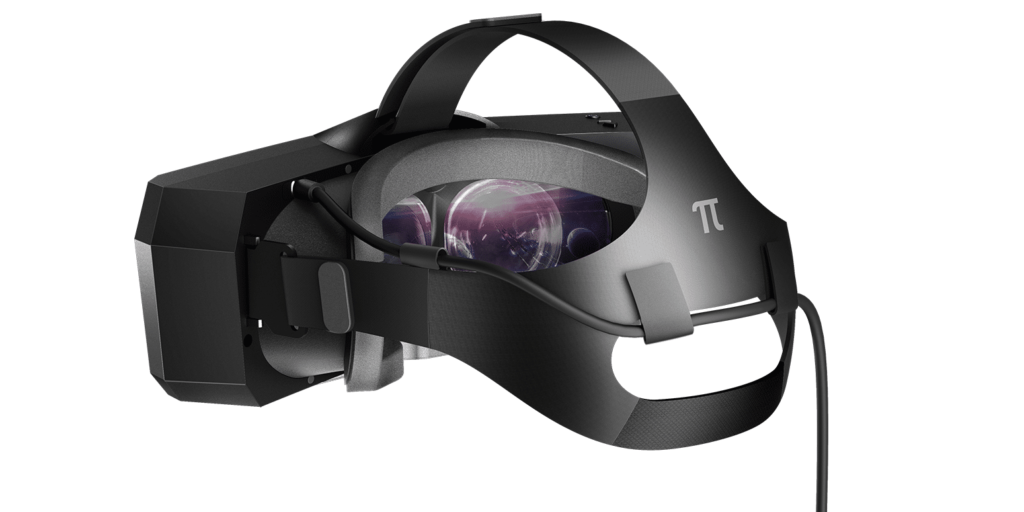
The Pimax 5K SUPER will have similar tracking as the Artisan: one based on the inside-out tracking from Nolo VR. The latest inside-out tracking by Nolo utilizes a mix of sound waves and infrared light. The tracking is more privacy-friendly than the camera-based tracking in the Facebook/Oculus headsets but just how precise it will be is yet to be seen. It will be interesting to see how this tracking will work and whether it will match the precise tracking seen in Oculus Quest and Oculus Rift S headsets.
You can also use the HTC Vive or Valve Index controllers and base stations to track this VR headset. The headset will also have compatibility with the Nolo positional tracking. The Valve controllers with the SteamVR 2.0 base stations will give you a near-perfect tracking accuracy with the 5K SUPER. Nolo positional tracking is good but still doesn’t have the power and capacities of SteamVR tracking.
The Refresh Rates Have Increased Across Models
Pimax also announced higher refresh rates for its older models of VR headsets. The Pimax 5K Plus runs 120Hz with a 180-degree field of view. The Pimax Vision 8K Plus is now up to 110Hz while its 4K headsets the Pimax Vision 8K Plus have been upscaled to 120Hz. Previously, the resolutions were as follows:-90Hz for 5K Plus and 80Hz for the 8K and 8K X headsets.
For the new higher refresh rates, the Pimax software “Brainwarp” will necessarily have to be updated.
https://virtualrealitytimes.com/2020/01/09/ces-2020-pimax-has-announced-new-virtual-reality-headsets-for-artisan-beginners/https://virtualrealitytimes.com/wp-content/uploads/2020/01/Pimax-Artisan-Headset-600x343.pnghttps://virtualrealitytimes.com/wp-content/uploads/2020/01/Pimax-Artisan-Headset-150x90.pngBusinessHardwareVR HeadsetsPimax has showcased improvements for its two well-known virtual reality models during this year’s CES 2020. These includes the company’s previous cheap “Artisan” model: Pimax Vision Artisan. The new entry-level virtual reality headset offers users a maximum field of view of 170 degrees as well as a resolution of 1,700...Sam OchanjiSam Ochanji[email protected]EditorVirtual Reality Times - Metaverse & VR
